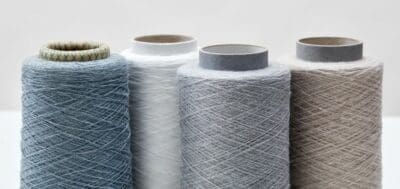
Wool is an amazingly reusable fibre. Woollen garments can easily be recycled, and their fibres put to entirely different uses. International Wool Textile Organisation takes a brief look at the history of the practice of wool recycling.
Wool Recycling Goes Back a Long Way
Recycling is a relatively new concept for most textiles, but this is not the case when it comes to wool. As early as around 200 years ago, Europe’s textile industry was repurposing wool fibres from old garments, and using them to make new ones.
In 1813, the shoddy and mungo industries were developed as a way of reusing discarded tailors’ clippings. Both woollen and worsted cloths were used in these practices. Over time, the practice of recycling post-consumer wool became a standard part of the wool textile industry. Today, woollen garments are reduced to their constituent fibres, and the newly woven wool is used to make blankets, carpets, scarves and more. Even premium home furnishings are sometimes made from recycled wool. 
Read Next: Top Wool Trends From Summer Trade Fairs
How Wool Recycling Works
First, end-of-life garments are sorted into colours. Next zippers, linings and other materials are removed. The woollen items are then sorted according to fineness and quality and pressed through shredding machines to expose the raw fibres, which are then bundled by hand, ready to be spun into yarn.
Recycled wool has high economic value, and can also improve the eco-perception and demand for wool fibre as a high-quality, product that is beneficial to the environment. Wool recycling is thus both a sustainable and economically viable practice, as it has been for two centuries.
Where to Find Recycled Wool
The IWTO office gets many requests for where to source recycled wool yarn and fabric. Many IWTO Members are active in this area, and we have compiled a list with their product descriptions and contact details: IWTO Recycled Wool List.
Recycled Wool Today
Today, less than 1% of all fibres produced today are wool. The majority are fossil fuel-based fibres like polyester and acrylic. However, research in the UK has shown that wool is 5% (by weight) of all clothing donated by consumers for recycling and reuse. That is substantially higher than its share of virgin fibre supply and makes wool one of the most re-used of all fibres.
Learn All You Need to Know About Recycled Wool
For more information on recycled wool, visit our Recycled Wool page.

